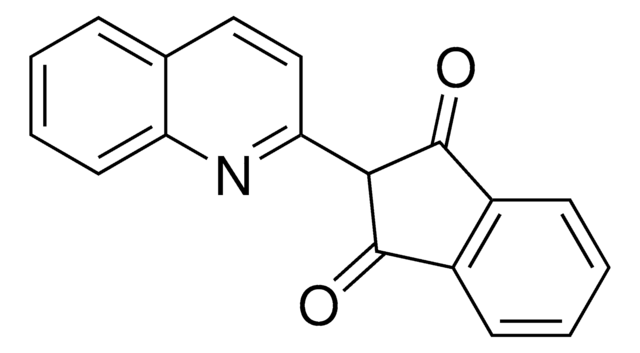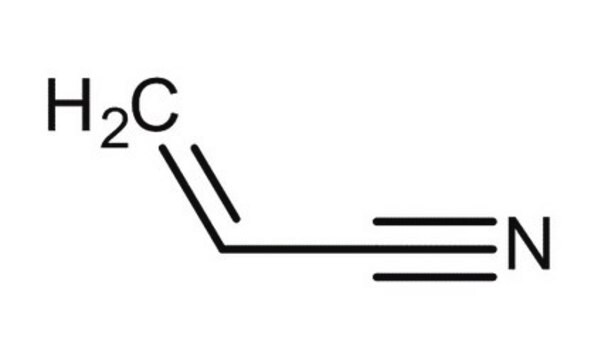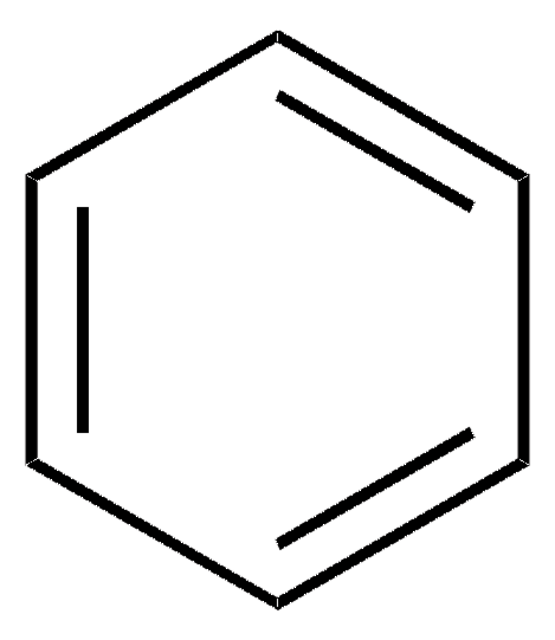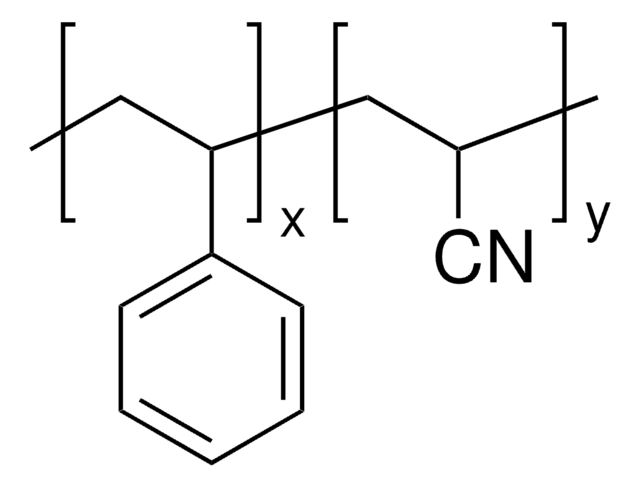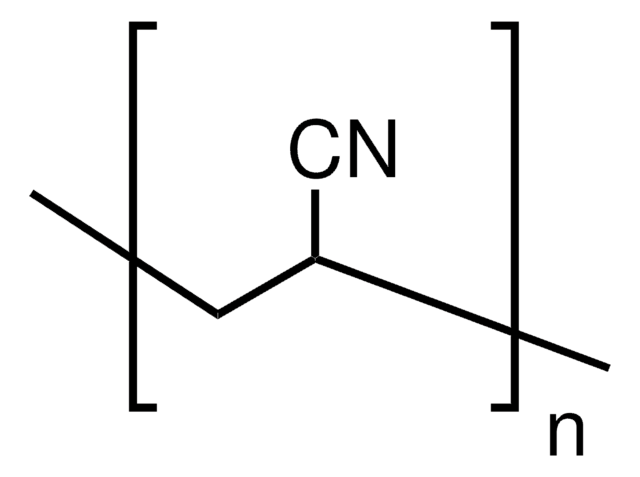320137
Acrylnitril
≥99%, contains 35-45 ppm monomethyl ether hydroquinone as inhibitor
Synonym(e):
Vinylcyanid
About This Item
Empfohlene Produkte
Dampfdichte
1.83 (vs air)
Qualitätsniveau
Dampfdruck
86 mmHg ( 20 °C)
Assay
≥99%
Form
liquid
Selbstzündungstemp.
897 °F
Enthält
35-45 ppm monomethyl ether hydroquinone as inhibitor
Expl.-Gr.
17 %
Brechungsindex
n20/D 1.391 (lit.)
bp
77 °C (lit.)
mp (Schmelzpunkt)
−83 °C (lit.)
SMILES String
C=CC#N
InChI
1S/C3H3N/c1-2-3-4/h2H,1H2
InChIKey
NLHHRLWOUZZQLW-UHFFFAOYSA-N
Suchen Sie nach ähnlichen Produkten? Aufrufen Leitfaden zum Produktvergleich
Anwendung
Biochem./physiol. Wirkung
Signalwort
Danger
Gefahreneinstufungen
Acute Tox. 3 Dermal - Acute Tox. 3 Inhalation - Acute Tox. 3 Oral - Aquatic Chronic 2 - Carc. 1B - Eye Dam. 1 - Flam. Liq. 2 - Skin Irrit. 2 - Skin Sens. 1B - STOT SE 3
Zielorgane
Respiratory system
Lagerklassenschlüssel
3 - Flammable liquids
WGK
WGK 3
Flammpunkt (°F)
23.0 °F - closed cup
Flammpunkt (°C)
-5 °C - closed cup
Persönliche Schutzausrüstung
Faceshields, Gloves, Goggles, type ABEK (EN14387) respirator filter
Hier finden Sie alle aktuellen Versionen:
Besitzen Sie dieses Produkt bereits?
In der Dokumentenbibliothek finden Sie die Dokumentation zu den Produkten, die Sie kürzlich erworben haben.
Kunden haben sich ebenfalls angesehen
Artikel
RAFT (Reversible Addition Fragmentation chain Transfer) polymerization is a reversible deactivation radical polymerization (RDRP) and one of the more versatile methods for providing living characteristics to radical polymerization.
Unser Team von Wissenschaftlern verfügt über Erfahrung in allen Forschungsbereichen einschließlich Life Science, Materialwissenschaften, chemischer Synthese, Chromatographie, Analytik und vielen mehr..
Setzen Sie sich mit dem technischen Dienst in Verbindung.
